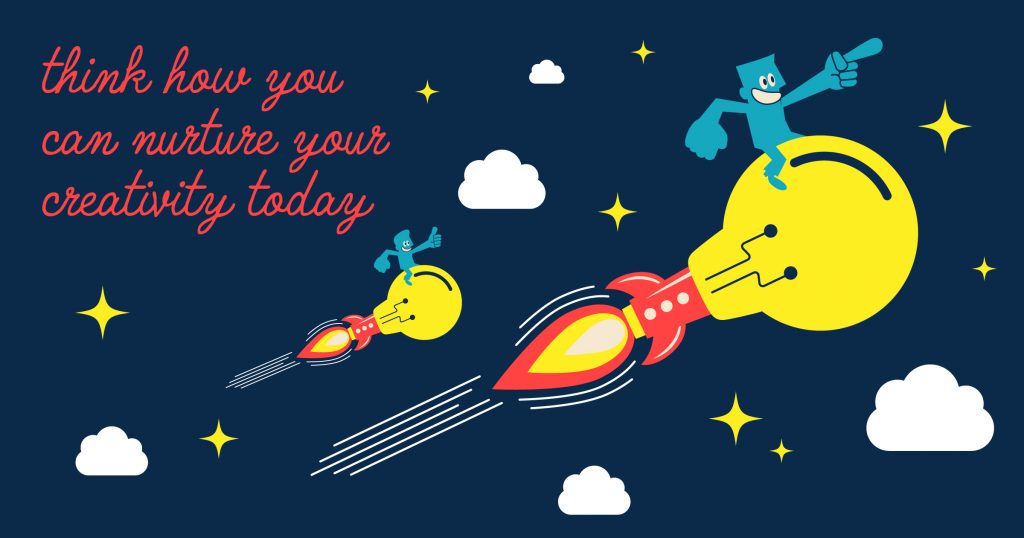The creativity key
AUGUST 24, 2018
Using creativity to improve our working environment and our output.
We hear the word ‘creativity’ used so frequently in news reports and social media feeds about anything from education to entrepreneurship, investment banking to space exploration. But what is creativity and how does it affect us?
Creativity can be such a hard concept to grasp, it’s nebulous and far reaching, covering all types of industries and sectors within them, whilst simultaneously playing a key role in everyday domestic life.
So, how can we use the term in a way we all understand and use productively?
What do we mean by creativity?
Sir Ken Robinson gives an usefully succinct definition;
‘Creativity is the process of having original ideas that have value.’

Robinson is an education and creativity expert, well known for giving one of the most popular TED talks ever with over 15m views to date. He has been an advocate for creativity and nurturing it within our education systems. In a ‘Mindshift’ article, he goes on to say ‘Creativity is possible in all areas of human life, in science, the arts, mathematics, technology, cuisine, teaching, politics, business, you name it. And like many human capacities, our creative powers can be cultivated and refined. Doing that involves an increasing mastery of skills, knowledge, and ideas.’
Feeding creativity at Mzuri
One of the complexities of creative work is the number of people involved throughout the whole process. At Mzuri, we continually review and refine our working processes to help us identify new ways to differentiate ourselves and improve our creative output for our clients and for ourselves.
Working collaboratively and creatively together as a team is key to our growth and that of our clients. We are only able to do this if we stay open to exploring new ideas, listen to feedback and adapt our ways of working, creating an environment that encourages exploration and a sense of fun.
The science bit: the impact of creativity on outcomes

A study by Forrester Consulting revealed companies that foster creativity are 3.5 times more likely to outperform their peers in terms of revenue growth? The study commissioned by Adobe identified how companies that cultivated creativity saw significant rewards for their investing time and resources in their creative environment .
Building an effective team around your brand is key for success. In ‘The Design Economy 2018’ report by the Design council, it states; ‘Designers are highly productive: We found designers were 29% more productive than the average UK worker, each delivering £50,328 in output (GVA per worker, 2016), compared to £39,111 across the rest of the economy.’
It’s actually far easier to evidence the effectiveness of creativity on a business. Just take a look at your (i)Phone… The first publicly traded company to be valued at $1 trillion has benefitted from the creativity and innovation of its employees starting with its former CEO, the late Steve Jobs. Jobs introduced such popular products as the iPod and iPhone that have driven Apple’s rise. Apple shares rose 2.7 percent to an all-time high of $207.05 on the 2nd August 2018, and is up 22 percent so far this year.
Jim Prior, Global CEO of brand consultancy Superunion states: ‘Creativity is what differentiates one brand, product or service from another. Nowadays, everyone has access to the same information and you can find out whatever you want to know, quickly and for free. So, if you want to be different and excel and add value to the world, as a business you have to find something more, something new, something others don’t have and this – almost by definition – is creativity’.

As a business owner or manager how can you nurture creativity in your own company and for your clients?
Firstly, buy in. Paul van Keeken at Adobe states; ‘It is key that senior leadership nurtures, funds and promotes programmes to increase creative capabilities, including early technology adoption and novel customer experiences.’
Secondly, be brave and embrace change. Ask questions of your clients and your staff. Be open to their responses and use their feedback to generate ideas, as ideas inspire people and solve problems. Remember, you don’t have to be doing creative work to approach it creatively. It is your ability to think creatively that will drive your business forward. Creativity is an innate human trait. We all have it and we all have the ability to develop it in ourselves and in those around us.
Finally, build creative culture. Whilst its important to embrace change, the need for structure is also vital. Sir Ken Robinson writes; ‘Being creative is not just about having off-the-wall ideas and letting your imagination run free. It may involve all of that, but it also involves refining, testing, and focusing what you’re doing.’ So build in structure to your working practices that provides a safe environment for your employees to explore and nurture their own creativity.
In summary
With so many reasons for striving to increase the creativity in our approach to life, it’s inspiring to think of the change it creates and how using creativity to not only improve our business, but also to develop our relationships, encourage collaboration and bring people closer together.
As individuals we all have the ability to reach for the stars, but what is the point if there’s nobody there to share the experience with?. Take a moment today to think how you can nurture your creativity, but better still, take another minute to bring someone with you on the journey and you will reap rewards you will never have imagined.

Can we help you with a project?

 © 2025 Mzuri Design Limited. Registered in England and Wales. Company No. 08451702 |
© 2025 Mzuri Design Limited. Registered in England and Wales. Company No. 08451702 |